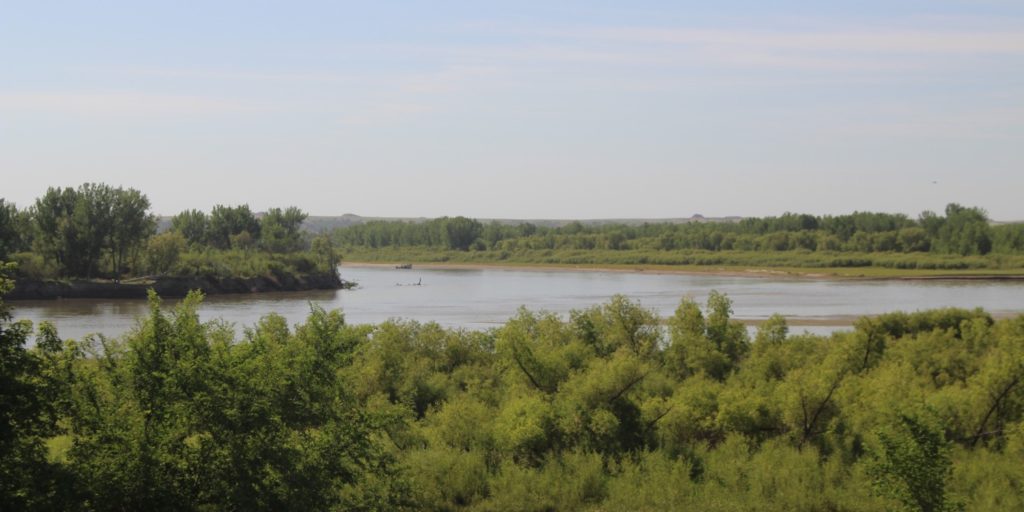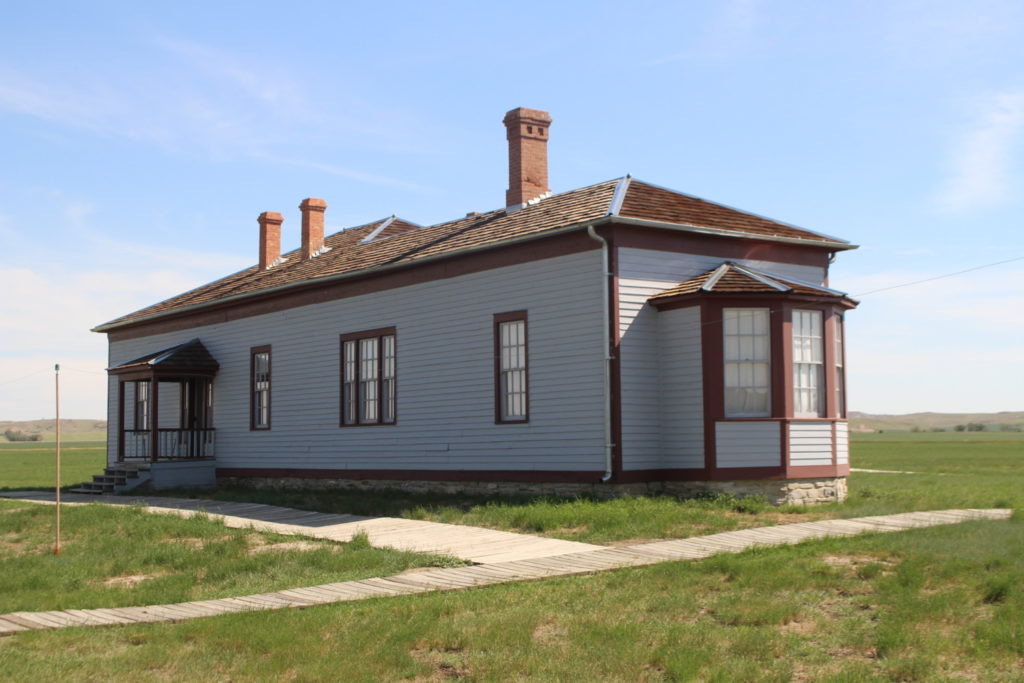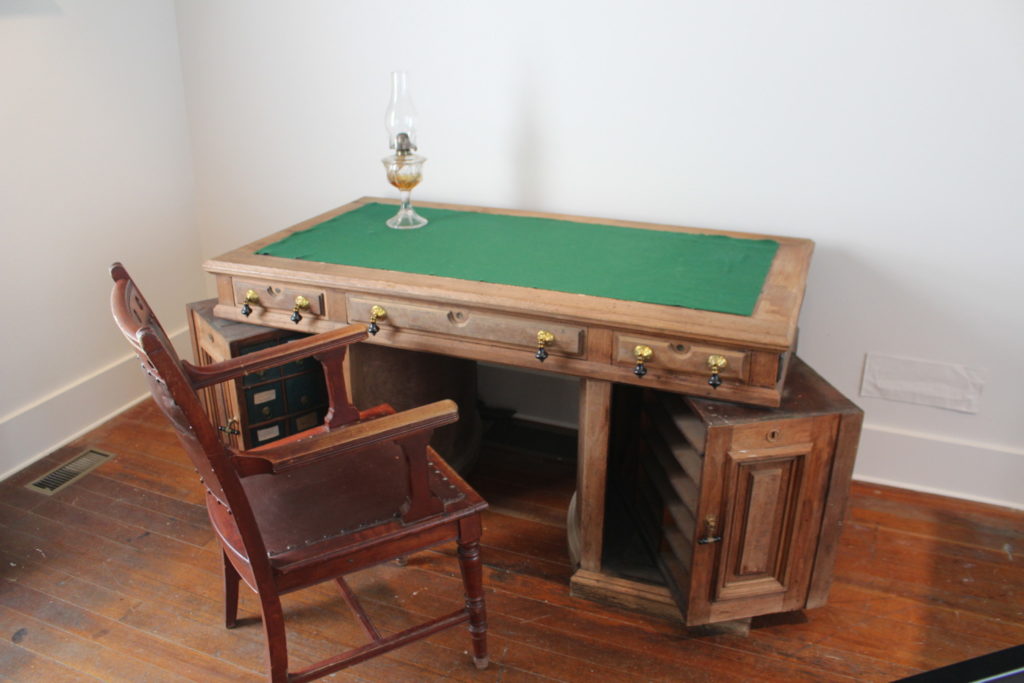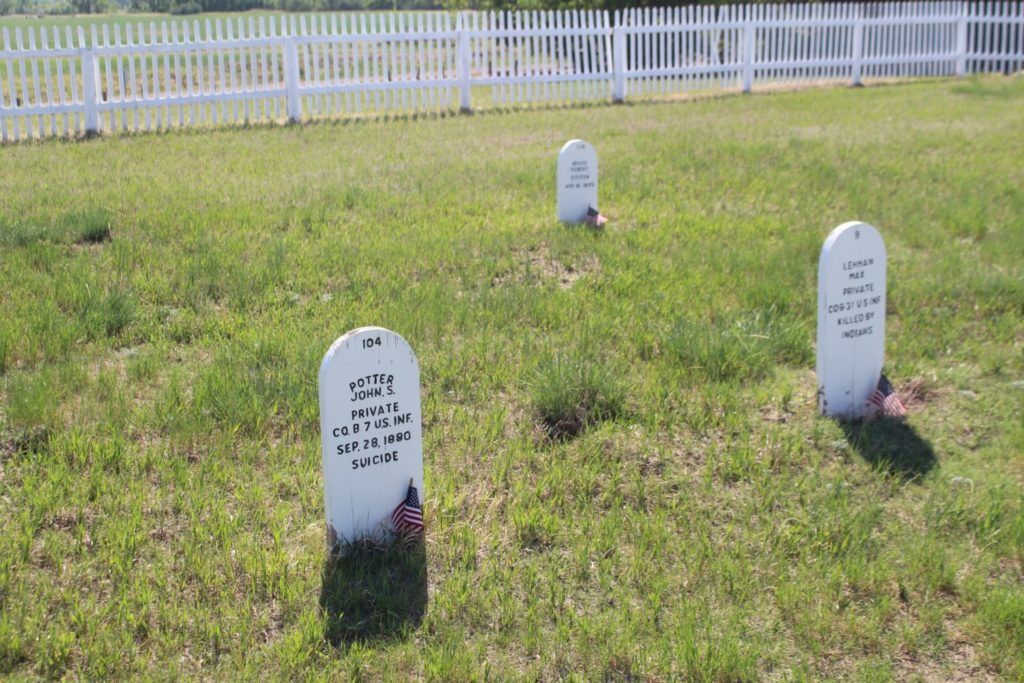When visitors come to see us, they are usually also headed to the Missouri-Yellowstone Confluence Interpretive Center and neighboring Fort Buford. Fort Union Trading Post is a National Park site. These other two are North Dakota State Historic sites. Often, people ask us if it is worth visiting, so Tom and I headed over there to check them out.
The Missouri-Yellowstone Confluence Interpretive Center is a lovely, modern museum with two exhibit halls and a movie room. On the morning we visited, we were the only visitors when we first arrived. In fact, we were there so close to opening that the ranger hadn’t gotten the cash register open yet. Because it costs $5 per person to enter the museum’s exhibit halls, we had to wait for the ranger to get the register open so we could pay. This admission charge also covers admission to Fort Buford, half a mile away. We watched a movie about Fort Buford, the neighboring State Historic site, and then walked through the two exhibits.
One exhibit hall had a new exhibit about Sitting Bull. Sitting Bull was the leader of the Hunkpapa Lakota Sioux who refused to live on their reservation. When his people were starving because of lack of game and pursuit by the US Army, Sitting Bull surrendered to the military at Fort Buford. The exhibit told the story of his life and that of his people.
Native Americans confined to reservations had to get permission before they could leave the reservation. Which meant they had no recourse to jobs, farming, or hunting off the reservation. Sitting Bull got permission to work for Buffalo Bill’s Wild West Show for one year. When he returned to the reservation, the Indian agent denied his application to work for the show for a second year. The agent felt Sitting Bull was becoming too influential. Instead, he had to stay on the reservation and watch his people starve to death. When Sitting Bull protested the lack of food on the reservation, he was shot and killed by some of reservation police. He fought for preserving his traditional way of life and was persecuted and killed for it.
The second exhibit hall had a permanent exhibit on the Lewis and Clark Expedition. Lewis and Clark traveled up the Missouri River in 1804. They camped overnight at the confluence with the Yellowstone and then continued on. On their return trip, Clark came down the Yellowstone and Lewis traveled down the Missouri to the confluence. Then they resumed their voyage together. Fort Union Trading Post and the Confluence Interpretive Center are both part of the Lewis and Clark National Historic Trail.
After spending plenty of time with the exhibits, Tom and I wandered outside to see the confluence. We walked along the shore of the Missouri River and then walked up a hill to get a better view of the confluence. The view was underwhelming, as are most confluences. One river flowing into another doesn’t look like good history, even if it is.
Next, Tom and I headed over to Fort Buford State Historic Site. We talk about Fort Buford at Fort Union because the trading post was bought by the army in 1867. The army dismantled the trading post and floated the lumber down the river to build the first housing at Fort Buford. Although Fort Buford was a big military post in the late 1880’s, it would probably have disappeared entirely by now except for one thing. Sitting Bull surrendered in the officer’s quarters at Fort Buford. You can see the actual room where he surrendered. There is also a barracks that is still standing. Both buildings are open daily from Memorial Day through Labor Day.
The most interesting part of Fort Buford was the cemetery. The State Historical Society has done a good job restoring the headstones, listing the cause of death. Although the soldiers were there to “fight Indians,” very few of them actually died in the fighting. Disease and accidents killed many more soldiers than fighting Indians.
We enjoyed our visit to the Confluence Interpretive Center and Fort Buford. We especially appreciated the exhibit on Sitting Bull at the museum. Since we visited, we have recommended the site to lots of our visitors. When they ask “Is it worth it?” we answer with a resounding “Yes!”






